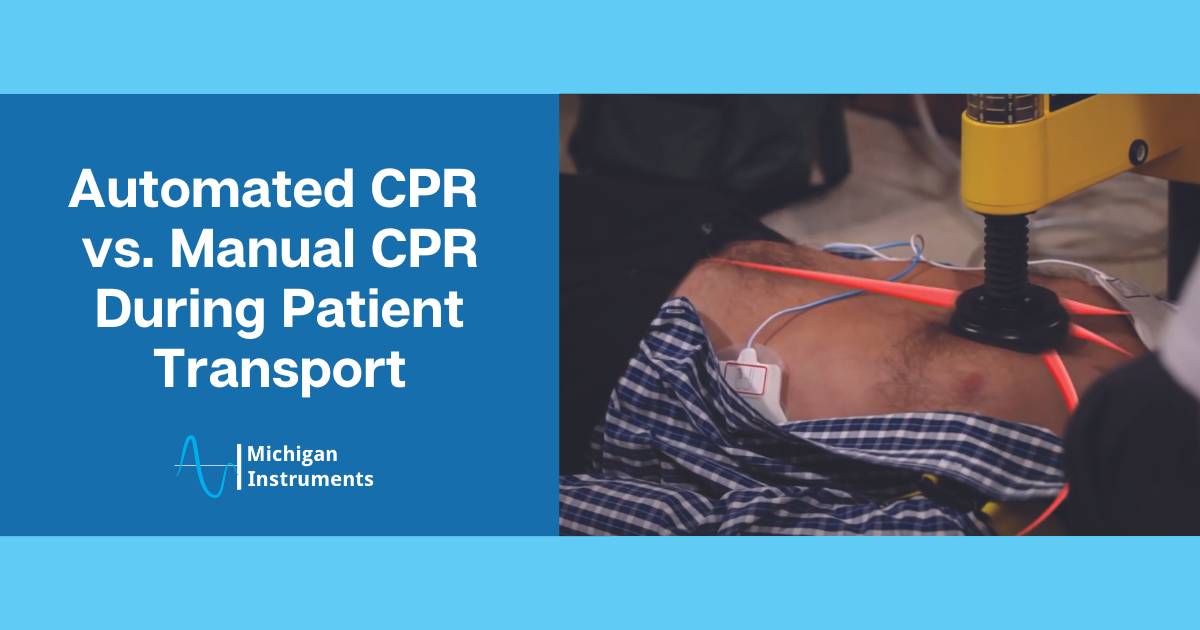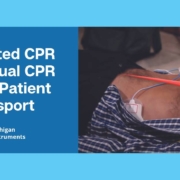
CPR is a life-saving tool that people have been training and using for years. For a long time, many have performed this procedure manually with their hands; sometimes using varied compression rhythms.
Nowadays, there’s a debate between manual CPR vs mechanical CPR, since new and improved medical technology now offers a safer, easier, and more effective way to provide CPR.
Keep reading to understand the benefits of automated CPR and its advantages over manual CPR.
Challenges with Manual CPR
While more valuable than not doing anything, there are significant disadvantages to manual CPR, such as:
- Manual CPR can be difficult to administer well, and is more difficult if a patient is being transported, whether in an ambulance or between different areas of the hospital.
- When a patient is being transported in an ambulance, it is quite difficult to deliver effective manual CPR. Additionally, it can be dangerous for the provider to perform CPR while in a moving vehicle.
- It is virtually impossible to perform manual CPR while the patient is being transported down a flight of stairs.
- Many EMS professionals cover rural areas or experience longer transport times due to heavy traffic in metro areas. They may not be able to provide the patient with consistent and effective manual CPR during the longer transport times.
Benefits of Automated CPR
Since ensuring patient and first responder safety is a priority during transport, the use of automatic CPR devices provides a safer, higher-quality alternative for providers who transport cardiac arrest patients.
Automated CPR devices allow for consistent, uninterrupted compressions that are more effective than manual CPR. In addition, automated CPR ensures consistency of compressions which is unmatched by typical manual CPR.
Many of our customers have found that using our Automated CPR devices, whether it’s our Life-Stat or Thumper, is safe and effective when patient transport poses a unique set of challenges and dangers:
- Extended travel times due to long-distances in rural areas or traffic congestion in cities
- Moving a patient down stairs where manual CPR is all but impossible
- In a helicopter or air rescue where providers must be secured
- When an extra set of hands are needed to assist all patient needs or with multiple patients
Read: How the Life Stat Automated CPR Device Saved a North Carolina’s Woman Life
Read: Life-Stat CPR Device Saves Man’s Life After Being Clinically Dead
How Our CPR Devices Provide Safe Patient Care
Our automatic CPR devices are designed to deliver prolonged and consistent compressions. This allows medical professionals to focus on other areas of patient care
The devices are lightweight, easy to use, and allow rescuers to be more safely positioned and less susceptible to personal injury.
Patients can easily be transported, even at an incline/decline, and our Life-Stat and Thumper will continue to perform without interruption.
Our customers have been vocal about how our CPR devices have helped them:
“The Life-Stat is 100% reliable. You can count on the device working every single time you pull it out of the bag. It is rugged and built so sturdy and it is virtually indestructible. Another very important feature is that it works on the available oxygen supply that every ambulance requires. If you need to ventilate your patient you have immediate access to 100% oxygen. And there are no springs, batteries or settings to worry about.”
– Randy Price, Paramedic
See The Advantages the Thumper and Life-Stat CPR Devices Provide
Interested in learning more about manual CPR vs mechanical CPR, or more information about the automated CPR devices available from Michigan Instruments? Contact us today to learn more, or request a quote.
You can also download our Automated CPR Brochure for prehospital providers.




